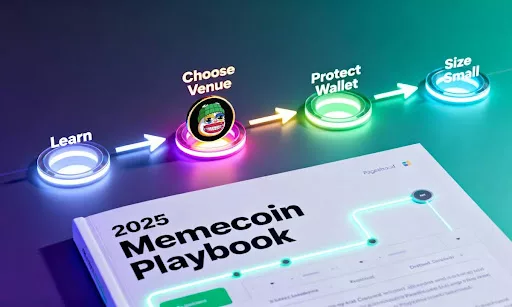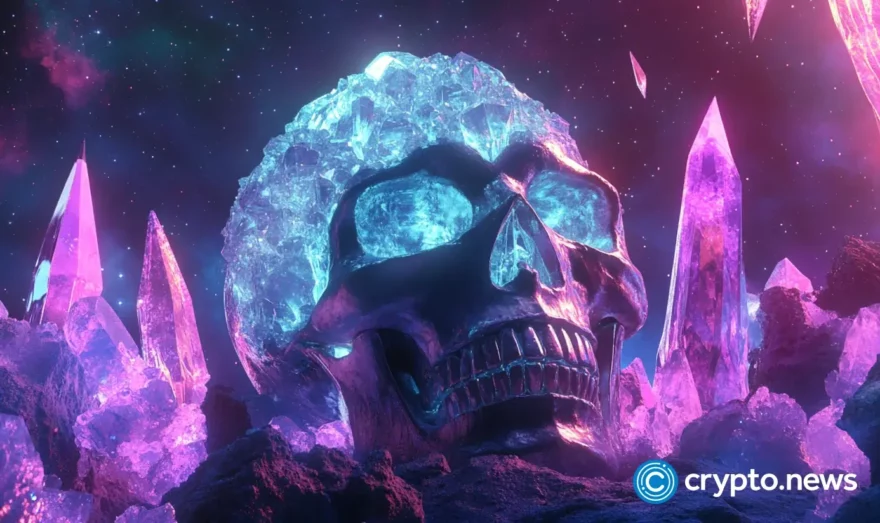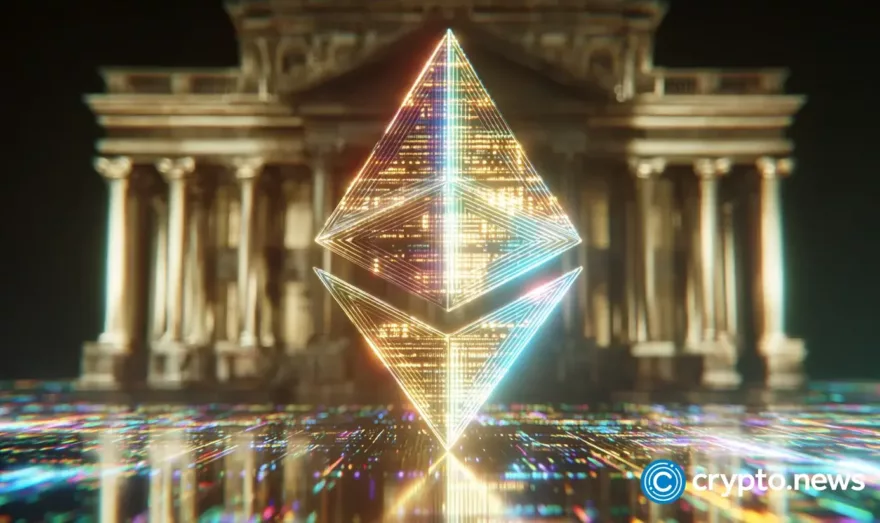What are memecoins and how to buy them in 2025

Disclosure: This article does not represent investment advice. The content and materials featured on this page are for educational purposes only.
Memecoins have evolved from internet jokes into a major crypto sector, and projects like FROGE show just how far the space has matured.

Memecoins are no longer a footnote at the bottom of crypto rankings. Dogecoin, Shiba Inu, PEPE, BONK, and others hold stable spots among the largest assets in the market, move billions in daily volume, and shape sentiment for a sizable slice of global liquidity. What started as forum jokes has turned into a permanent lab for narrative, attention, and, in many cases, high-velocity speculation.
So talking about memecoins is no longer just talking about funny coins. It is talking about behavior. These are tokens that compress internet culture, timing, social media, hype cycles, and, more and more often, some kind of attached product. That might be Layer 2 networks, games, entertainment platforms, digital identities, or launchpads.
Projects like FROGE only exist because the field has grown more sophisticated. If in the early days a mascot and a contract were enough, now there is room for memecoins that try to structure internal economies of attention, reputation, and participation.
How we got here: From forum joke to multibillion-dollar sector
To answer the question of what are memecoins, you have to go back a few years and accept an uncomfortable fact. Crypto has always had one foot in irreverence. Dogecoin was born in 2013 as a satire of a market that already seemed to take itself far too seriously. The code was derived from existing projects. There was no grand governance roadmap, and the marketing was basically a charismatic dog circulating online.
Even so, the combination of forum culture, tipping in online communities, and speculation cycles pushed DOGE into the billions in market cap, something unthinkable at the time. From there, the game changed scale. Shiba Inu arrived with the same dog meme aesthetic, but came with an ecosystem pitch. With its own AMM, NFTs, burn mechanics, and later a dedicated Layer 2, Shibarium.
PEPE showed that one of the most iconic memes on the internet could be turned into a tradable token, and proved in 2023 that there is still room for new entrants to jump into the top 50 if they can line up community, liquidity, and timing. In parallel, memecoins tied to political narratives, games, artificial intelligence, and public figures started to appear.
The basic equation stayed the same: a strong symbol plus a flow of capital willing to take risks. Over time, what could be dismissed as coins based on jokes picked up more layers. Today, when someone seriously asks what are memecoins, the answer usually includes at least four dimensions:
- Culture: emoji, memes, narratives, language, and aesthetics that spread easily on social media.
- Market: real liquidity, order book depth, listings on major exchanges, and inclusion in sector indexes.
- Design: distribution model (fair launch vs presale), tokenomics, burn policies, incentives for holders and liquidity providers.
- Product: at the very least, a well-organized community, and at the high end, complex structures like dedicated L2s, entertainment platforms, games, AR identities, and internal points-based economies.
Newer projects like FROGE are born directly into this fourth-layer environment. They are not just competing for the best joke, but for the ability to turn attention into something at least minimally structured, with point systems, reputation, interactive experiences, streaming, and creation tools. It is the difference between a token that only reacts to tweets and an ecosystem that actually encodes how the community organizes itself around the meme.
FROGE as a memecoin of identity and reputation
FROGE stands out less for its mascot and more for the way it tries to program identity, reputation, and attention into the core of the project. Instead of being just a token with a loud community, it is structured as a platform experiment where the meme is the visible surface of a deeper layer of data and interactions.
On the organizational side, the presence of CTRL-X Inc. and the technical legacy of FLTR Studio matter because they frame the kind of product the team is aiming to deliver. It is not just we want to do AR someday, it is a team used to shipping augmented reality tools for large collections like Bored Ape Yacht Club.

Whether it’s FROGE or anything else, you win by understanding the rules before entering the trade.
They are also used to operating with minimum quality standards set by communities that do not tolerate half-baked prototypes. That influences everything from UX decisions to how digital identities are rendered and managed inside the ecosystem. At the user level, FROGE organizes its experiences around performative identities.
Each participant can take on a FROGE avatar tied to digital assets such as NFTs, which works as both a mask and a signature. That identity can show up in streams, game shows, challenges, and other entertainment formats planned for the project.
Instead of just having a static PFP, the user controls a character that actually acts inside the FROGE universe, and that behavior is observable. Who participates, when they show up, how often, and with what impact on the community. That is where internal points and the reputation layer come in. Rather than treating all holders as interchangeable, the ecosystem tends to reward those who genuinely contribute attention, content, and engagement.
How to buy memecoins without falling for the obvious plays
Understanding how to buy memecoins in 2025 means accepting that where and how you enter is almost as important as which token you pick. The technical process is relatively simple. You convert fiat into crypto through an on-ramp (usually a major CEX), move funds to your own wallet, and from there access memecoins on centralized exchanges or DEXs.
The problem lies in everything that happens in the details. On the more traditional path, a trader opens an account on a major exchange, completes basic KYC, and buys a base asset, usually USDT, USDC, or another stablecoin. From there, you get two scenarios. When the memecoin is already listed on a relevant CEX, you buy directly on the available pair, with a visible order book and at least some protection against extremely thin liquidity.
When the token has not yet reached the big platforms, the entry point is usually a DEX on networks like Ethereum, Solana, BSC, or similar. In that case, you need to connect a self-custody wallet, double-check the token’s official contract, set slippage carefully, and understand that front-running bots and shallow pools can turn a rushed buy into an instant loss.
This is where the less glamorous part comes in. Checking if liquidity is locked, if the contract has been verified, if the supply is not overly concentrated in a handful of wallets, and if there are fake contract addresses trying to pass as the same ticker.
In projects with a more serious structure, as in FROGE’s case, which is anchored in a corporation and a known technical stack, it makes sense to start from official channels to find the correct trading link instead of trusting the first result on an aggregator or search engine. In the end, how to buy memecoins responsibly is less about memorizing a step-by-step guide and more about internalizing a few basic filters.
Conclusion
Memecoins today are both a market sentiment gauge and a narrative lab. They condense internet culture, incentive mechanisms, product experiments, and a constant willingness to test where the limits of collective attention really are. On the practical side, buying these assets is still an exercise in low friction with maximum risk.
In that environment, projects like FROGE almost work as a summary of the sector’s new phase. They still carry all the irreverence of a memecoin, but try to anchor the story in a concrete platform for digital identities, entertainment, and attention data, backed by a development structure that did not appear out of thin air.
To learn more about FROGE, visit the website, X, and Telegram.
Disclosure: This content is provided by a third party. Neither crypto.news nor the author of this article endorses any product mentioned on this page. Users should conduct their own research before taking any action related to the company.














